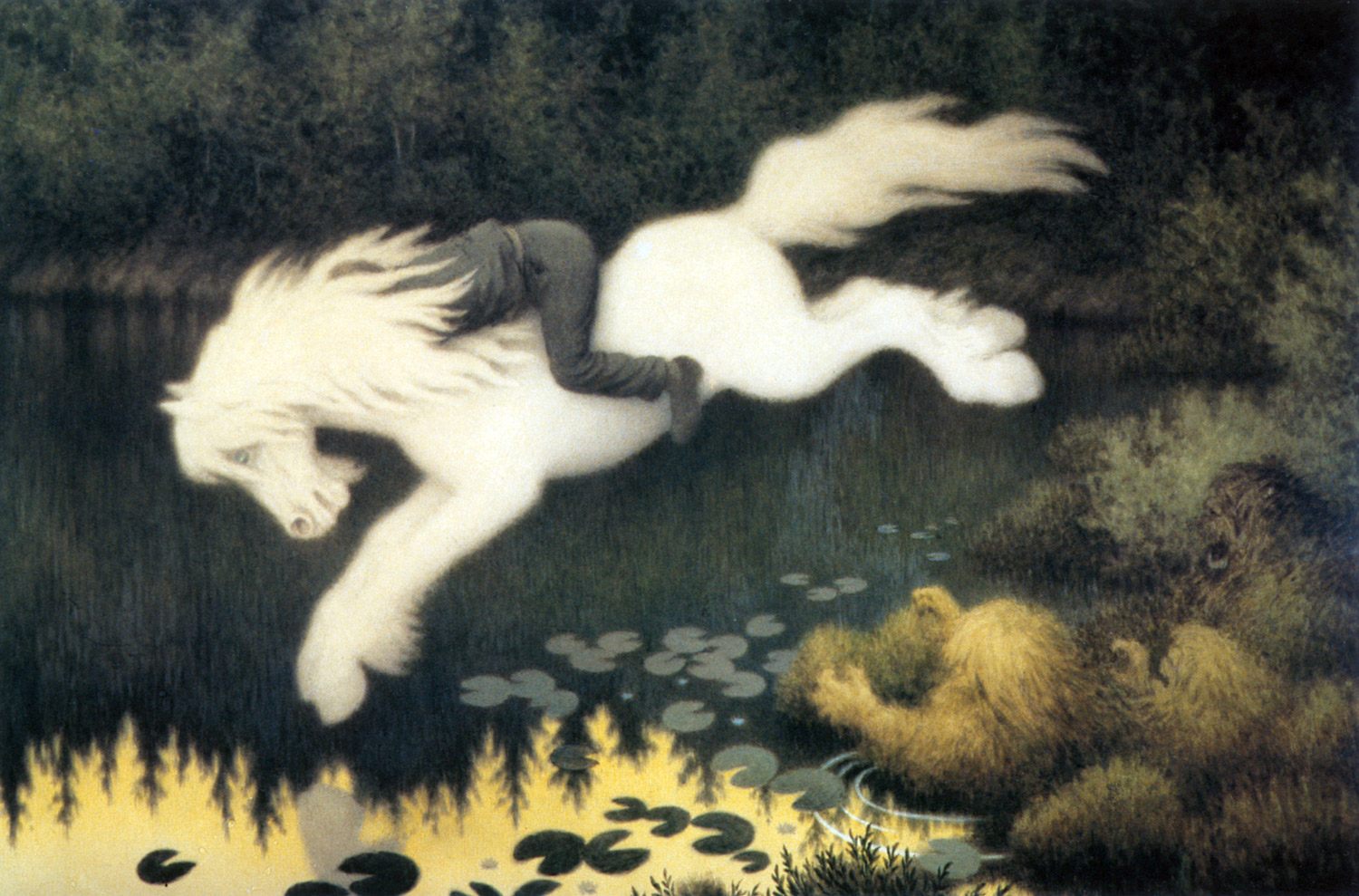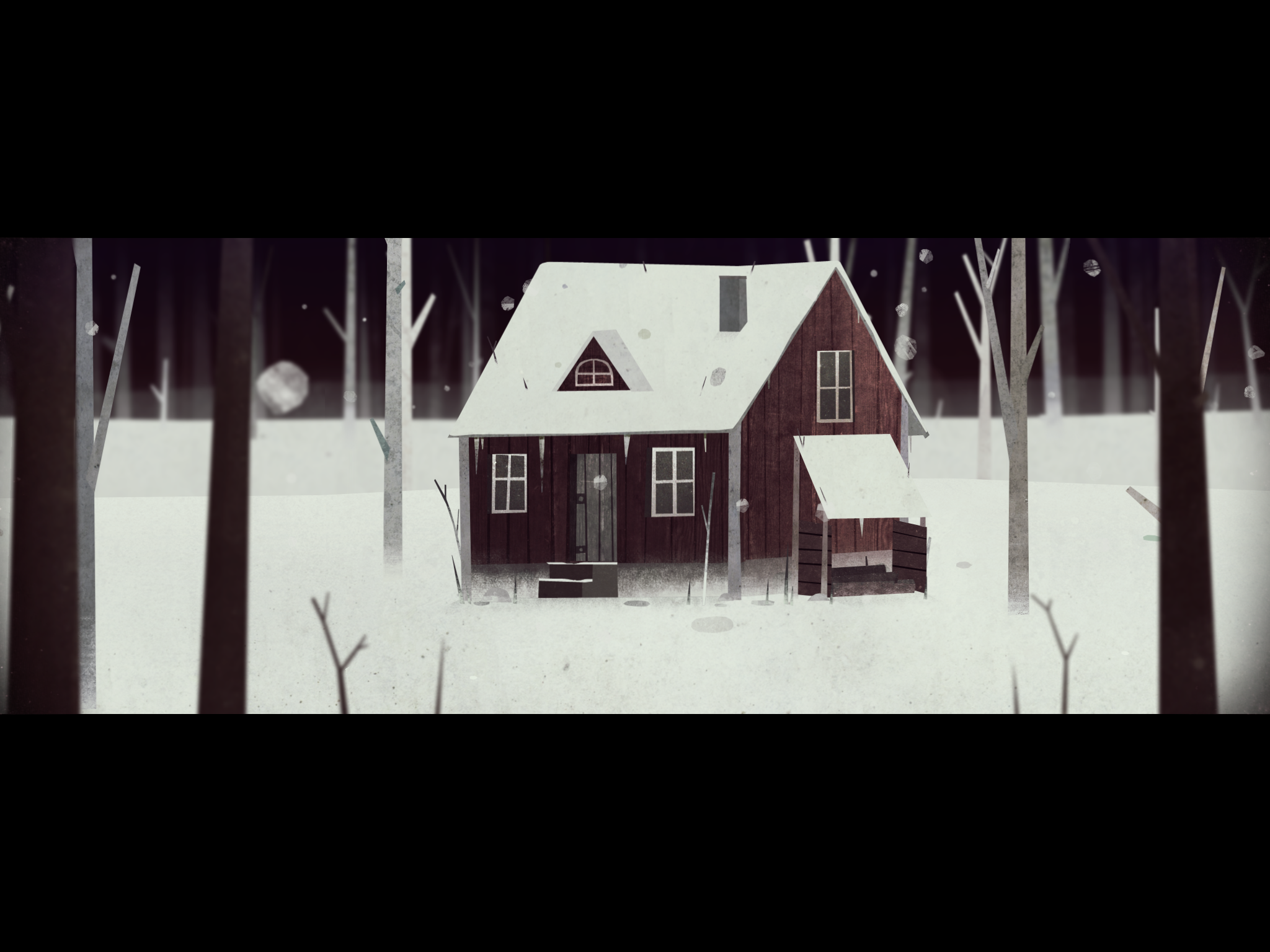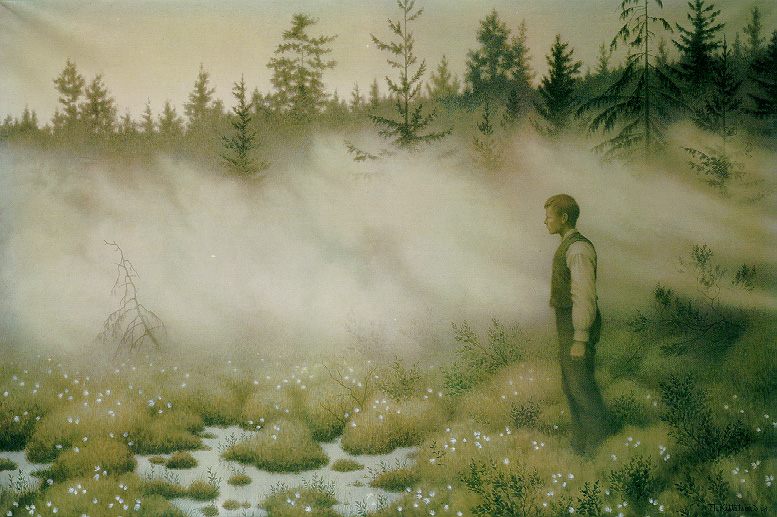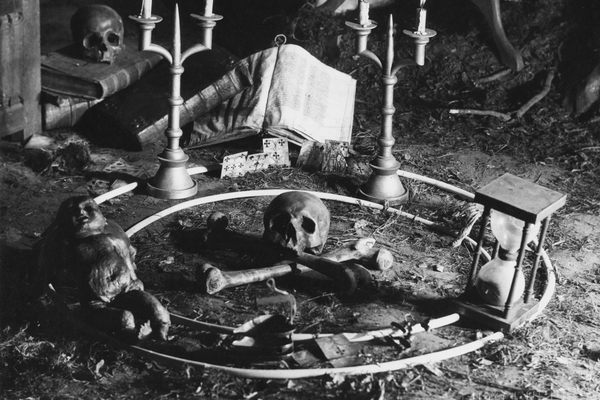To See What the Upcoming Year Holds, Take a Solo Walk in a Dark Forest
In Swedish mythology, a “year walk” is a prognosticatory stroll in which one is beset by scary creatures.
Picture a dark, gloomy forest on a winter’s night, silent aside from the delicate crunch of crisp snow under your feet. Imagine being alone, without technology, far enough from your village that you couldn’t hear a rooster crowing or dog barking. You’ve spent all day in darkness, avoiding eating, drinking, or socializing, and told no one of your plans.
Now it’s midnight, the only things separating you from your objective are the woods and a handful of threatening creatures who want to lead you astray.
That is, according to folklore, how some adventurous Swedes have spent the first moments of a new year.
Participating in the ritual known as årsgång, or “year walk,” promised information about the future—if a walker followed the rules and reached the local church or graveyard. This form of divination is recorded in documents dating back to the 1600s, according to a chapter by Swedish folklorist Tommy Kuusela in the anthology Folk Belief and Traditions of the Supernatural,* but many such records refer to it as “ancient,” making it unclear exactly when Swedish people began performing the ritual.

Årsgång is far from the only form of supernatural divination in Swedish folklore, but it is one of the more extensive. While rituals like circling the house three times counterclockwise with a porridge scepter before eating Christmas dinner were supposed to provide a limited glimpse of things to come, the year walker had the potential to learn not only his own fate but that of the entire village.
With greater reward, however, came greater risk.
The walk took place on New Year’s Eve or another winter holiday, when Europeans believed dark forces and supernatural beings were active and the dead mingled with the living. This let the walker tap into the prophetic power of the season, but it also meant opening oneself up to frightening encounters.
Cemeteries were particularly active. Walkers reported songs coming from open graves, dead spirits walking about, and fresh graves that did not exist before, according to Kuusela.
They could also expect to encounter frightening entities like the brook-horse (bäckahäst) and the huldra, as described in an account of årsgång added to the University of Southern California’s Digital Folklore Archives by student Cameron Steurer.

The brook-horse, she learned from a Swedish friend, would invite children to ride on it and lengthen its back to accommodate more and more children. “When the horse felt it had enough riders, it would jump into a body of water, drowning all of its riders and taking their souls for its own,” wrote Steurer.
The huldra, on the other hand, was a beautiful, tree-like nymph. “Said to be the forest guardians, they would lure people to their homes to either marry them or kill them,” Steurer wrote. “Either way, the victim would be lost forever.”
Other creatures did all they could to distract a year walker. Talking, laughing, or being afraid was forbidden during the somber walk, and those who broke these rules sometimes sacrificed their sanity, lost an eye, had their heads distorted, or simply disappeared, according to 18th-century records of failed walks translated into English by Kuusela.

The walk was supposed to be a solitary experience, but walkers were allowed to join each other if they met up while performing the ritual—as long as they didn’t talk. Former Harper’s Magazine editor A.H. Guernsey shared an account in an 1871 article that illustrates the consequences of breaking that rule.
“There is a popular belief that at a certain instant the water of every spring is for a moment turned to wine,” Guernsey wrote in “Folk-Life in Sweden.” “One of the pilgrims, happening at this moment to drink from a spring, incautiously exclaimed to his companion, ‘Now the water is wine;’ whereupon a voice was heard from the depth, ‘And your eyes now are mine;’ and the unfortunate man became blind from that instant.”
At times, the spirits were less sinister and more comical. One story from Kuusela’s book describes a walker who encountered rats drawing a cart of hay. “One of the rats slipped on the ice and fell on his back while farting so loudly that it could be heard across the whole parish. At that moment, the year walker burst into laughter, and the vision disappeared, which meant his quest was for naught.”
All this was endured in exchange for seeing omens, which were often bleak and frightening themselves. The walker might gain information about marriage, the harvest, the possibility of war, or if there will be fires, but the most common information was about who was going to die in the upcoming year.
Walkers learned this by visiting the fresh graves, observing visions through the church keyhole, or encountering funeral processions during the walk. Sometimes these signs pointed to the death of the walker himself.
Although the ritual mostly died out a century ago, there is a modern option for people who don’t want to trespass on church property: The Year Walk video game released by Simogo in 2013.

The unsettling, immersive game features a walk through the snowy woods, no instructions and very little dialogue. Writer Jonas Tarestad came up with the story after finding a brief mention of årsgång in a book about folklore.
“We based [the game] off folklore in a very unscientific way,” says Tarestad. “In a way we recreated the word of mouth process of the past and added our own details. In the end we had sort of lost the grasp of what parts we made up to fit the game and what parts were original folklore.”
By doing that, Tarestad and Simogo may simply be performing another step in the evolution of stories about the year walk, bringing a version of the obscure Swedish legend to English-speaking gamers and allowing the tales to mutate from there. After all, as USC Associate Professor of Anthropology and Communication Tok Thompson points out, “original folklore” is a bit of an oxymoron.
“There’s a few words you don’t tend to find folklorists saying a lot. One of them is ‘original,’” says Thompson, explaining that finding the original source of a folk tradition like årsgång is nearly impossible and not even particularly desirable. A story or a joke might not be so interesting the first time it gets told. Folklore is all about the process of retelling and enhancing.
“You could go back to the same village, have the same storyteller record the same story again the next year, and it’ll be different,” said Thompson. “That’s also, I think, what gives it its strength, its adaptability. As the world changes or as a culture changes, its folklore will change.”
Plus, said Thompson, it’s about more than belief or accuracy.
“There’s a huge aesthetic component of folklore. Is it a funny story? Is it a moving story? Is it a beautiful dance? All these things, the aesthetics, the fuzzy logic, all kind of come together in folklore. For me, it’s a huge part of what it is to be human.”
After Simogo’s Year Walk was released, Tarestad says he saw people writing about going on a modern-day year walk on social media. But he’s not sure if they actually did, and he never considered performing the ritual himself.
“I like to eat and drink and be merry during Christmas time,” says Tarestad, “rather than engaging in dangerous old pagan rituals.”
*Correction: The story originally said that Tommy Kuusela wrote the book Folk Belief and Traditions of the Supernatural. The book is an anthology; Kuusela wrote a chapter.










Follow us on Twitter to get the latest on the world's hidden wonders.
Like us on Facebook to get the latest on the world's hidden wonders.
Follow us on Twitter Like us on Facebook